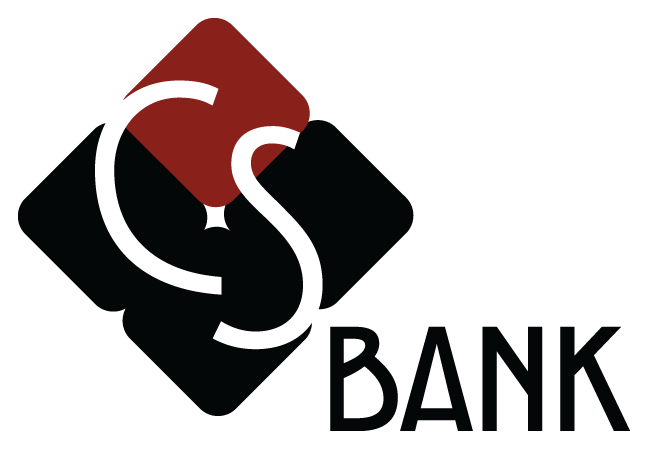not featured
2025-05-30
5/30/2025
General
published

How to Make a Budget: Stop Overspending and Reach Your Financial Goals
With the New Year upon us, now is a great time to take a hard look at our spending habits and make plans for how to achieve our financial goals. Creating and revising a budget is an important strategy to follow, no matter what time of year—and reducing spending to carve out ways to save and invest your hard-earned money can have huge financial payoffs down the line.
Whether you are looking to create a savings plan on a tight income, pay off debt, or simply understand the basic rules for budgeting to give yourself a little financial breathing room, this post is full of great, applicable advice. Keep reading to learn more about how to budget better, finding the right strategy that works for you, and how to keep yourself from going over budget.
What is a budget?
A budget is a system of personal accounting that allocates specific amounts of your total income toward your expenditures and savings, creating a balance, such that you aren’t spending any more money than you bring in. Most personal budgets look at one month at a time rather than an entire year. Not only is it more manageable to look at smaller chunks of time, but most payments (like utilities and mortgages) occur on a monthly basis.
Creating a balance of income and expenses, doesn’t mean that you won’t ever take on any debt, but that any debt payments are manageable within your monthly budget. In fact, some debts that allow you to make major life changes, like purchasing a property or furthering your career through education, can yield drastic financial improvements over the years.
One common misconception is that only people who have had trouble managing their finances or have accumulated a lot of extraneous debts need to follow a budget. Budgets are important for everyone to achieve their financial goals and make the most of their income. Even if you are fortunate enough to be able to easily meet your commitments each month, consider that creating a purposeful spending and savings plan could end up helping you reach your goals faster, grow a larger nest egg, snag that dream home, or simply attain a higher level of day-to-day comfort.
Why should you have a budget?
As we mentioned above, budgets help you make the most of your income, and a balanced budget will ensure that your debts and expenses will never exceed the money you bring in. But what are some other benefits to having a budget?
- Creating and following a budget puts YOU in control of your financial decisions.
- Budgets allow you to identify and achieve your financial goals, including saving for retirement or buying a home and paying off debt.
- When you create a workable budget, it can keep you from overspending, avoiding excessive debt and financial instability and stress.
- Budgets help you recognize poor financial habits you may not have realized that you have giving you additional paths to saving money and creating a better income/spending balance.
How to Create a Budget
Making a budget the first time can feel a little bit overwhelming, as a good budget contains accurate details of your entire financial picture. However, if you break the process into digestible pieces, you can not only make it easier to navigate, but also only ensure your budget is both realistic and precise. Here are the steps to making an accurate budget:
1. Tally your income
Before you can start budgeting your money, you need to know how much you have coming in. Include all income that you can count on receiving each month with regularity. To keep things simple, only count your net income from these sources—that is, after taxes, expenses, and other deductions. This can include:
- Pay from employment
- If you get paid biweekly, calculate your weekly pay (divide your take home pay in two) and multiply it by 4.4—the number of weeks in the average month.
- Alternatively, you can choose to only include two pay periods each month (using the pay for those extra days as a financial buffer), or sweep that amount into your savings. If you decide to save this amount, by the end of the year you’ll have almost 5 weeks of pay allotted to your savings goal!
- Rent
- Dividends and interest payments
- Pensions and retirement payouts
- Social security
Income that you can count on but only receive occasionally, for instance pay from a seasonal job or a once-a-year windfall like a tax return can complicate the picture. You have two courses of action in these scenarios and there are pros and cons to both:
- Divide the total amount you’ll receive over the course of the year by 12 (months). Pro: It can help balance your budget, especially if you depend on this income to meet your obligations. Con: If you get those funds once a year, they may not actually be available for use each month, creating budget shortfalls.
- Don’t include it in your budget at all. For smaller sources of income and ones that can fluctuate year-to-year, it might be best to treat them as a bonus rather than countable income. Pro: Provides a cushion should you experience a budgeting shortfall and can help you grow your savings if you don’t allocate it as part of your regular budget. Con: Can make it difficult to actually balance your budget, even if you really do have enough income to meet your obligations.
Not sure what to do? You could also consider a hybrid approach. Round down this income to what you are reasonably sure you will receive, and set it aside for occasional expenses: Holiday shopping, car inspections/maintenance/repairs, college savings plan or IRA contributions, rainy-day funds, vacations, or planned home repairs.
2. Calculate Your Expenses
Making sure you are counting all of your expenses is key to creating a successful budget. Though rainy-day funds and built-in buffers can help you absorb smaller costs, missing a major expense, or even a few minor ones, can throw your whole spending and saving plan out the window.
So how do you ensure you’re not missing anything? The key is to scrutinize your past habits. Print out or pull up your credit and debit card statements from the past year, and divide your spending into three categories:
- Fixed monthly expenses. These include subscriptions like Netflix or gym memberships and regular charges like health insurance, trash collection, or internet services. They may go up a little occasionally, but largely stay the same from month to month.
- Variable monthly expenses. These include things you pay for each month, but the actual amount you pay may fluctuate a little over the course of the year. For these expenses, you’ll take the average that you spend, rounding up by 5-10%. Items may include gas and public transit, electric, groceries, restaurants and takeout, entertainment, clothing, credit card debt, and childcare.
- Occasional and highly-variable expenses. These are expenses that either fluctuate drastically depending on the month, like heating oil, vacation, home maintenance, or gifts, or are expenses that happen only once or twice a year, like property taxes (if they aren’t in your mortgage payment), holiday shopping, yearly subscriptions, summer camps, and tuition bills.
-
- Like your variable income above, you will need to choose how you incorporate these into your budget—either adding them up and dividing by 12, or setting aside sufficient funds each month to cover them over the course of the year.
Included in these three categories you will find examples of both necessary and discretionary spending. Necessary expenses are the things you need to stay healthy and secure and meeting your employment and financial obligations: shelter, clothing, food, basic utilities, childcare, medical costs, loan/debt payments, and transportation. As you tally them all up, it’s helpful to put an asterisk or otherwise mark your discretionary spending—costs like entertainment, certain subscriptions, and takeout. These are areas to focus on if you find yourself needing to cut back on your spending in later steps.
3. Define Your Goals
When creating a budget, your underlying goal is always to ensure that your income and spending are in check. But beyond this, a successful budget creates room to achieve further financial goals. That’s why it’s crucial to take the time to select which goals are important and necessary for you and your family, so you can strategize on how to get there with a realistic budget plan. Some possibilities include:
- Reducing debt. Do you have any income left over after your expenses are paid for? Could you cut discretionary expenses or make other changes to your lifestyle to find extra cash? Work within your budget to find ways to pay down your debt, setting aside a specific amount each month.
- Don’t have enough extra income each month, even when reducing expenses? Want to pay off even more debt? Things you could do include:
- Paying above and beyond the minimum payments and monthly payments on your credit card bills and other loans when you have extra cash. (Start with the accounts with the highest interest rate for maximum impact!)
- Consolidating your high-interest debt or multiple debt payments into one lower-interest, personal or home equity loan to simplify your budget and make your dollar go farther.
Saving for a Goal. Treat your savings just like you would treat a regular monthly payment obligation. Add a savings category to your expenditures. Consider having a set amount swept into a savings account each month or deposited from your direct deposit paychecks.
Savings options include:
- Retirement: Max out your employer’s 401(k) match and aim to save as much as you can in your IRA (IRS allows up to $6,000 per year).
- Education: Consider a 529 Education Plan for your children. CDs and savings accounts also make great tools for shorter-term education savings.
- Down Payment on a New Home: The more you save, the easier it will be to qualify for an affordable home loan. Aim for 20%—the preferred number by lenders—but keep in mind that first-time home buyers can get loans with less.
- Vacation/Holiday Shopping/New Car: Rather than going into credit card debt or taking out loans on goods and experiences that won’t hold their value, create a budget to save for these things in advance, with monthly savings goals to help you get there.
- Saving for Emergencies or a “Rainy Day”. Everyone should have an emergency- savings fund to help cushion the blow of large, unexpected expenses, or get you through tough financial times, including job loss. Aim to build up at least three months' income over time. Set up your fund in an accessible interest-bearing money market or savings account.
- Building a Nest Egg. If you already are saving for retirement, your debt is under control, and you are comfortable with your other savings goals, it’s time to consider other ways to ensure financial stability and comfort. Consider setting aside a portion of your income for investments. Speak to a financial advisor to create a plan and get started, bringing in your budget to help guide you through decisions on how much to set aside and what kinds of investments will make the most sense for you.
4. Choose the Best Budget Method for You
Once you have gathered all your information—income, expenses, and savings goals—you can start building your plan and selecting tools and methods to help you do so. There are simple strategies to follow to help you wisely divvy up your income, and basic hacks to help you stay on track. Here are a few types of budgets to consider:
50/30/20 Method
With this technique, you split your income into 3 categories:
- 50% for necessities
- 30% to wants
- 20% to savings or debt repayment (not including your home loan, which is a necessity)
While these ratios don’t have to be too strict (In fact, many follow a 60/20/20 rule, instead), they can provide a general guideline about how to smartly allot your money. If you find yourself spending more than 30% for wants, or 20% for debt repayment, it may be time to think of some habitual changes.
Reverse Budget
Here, you pay yourself first, putting your savings at the forefront. Decide how much you want to set aside for savings and then use the rest for your expenses, prioritizing needs over wants to meet your goal. This strategy may be best for people who don’t need to worry about overspending, but some form of it can work for any budget.
Envelope Method
If you find yourself stuck in an endless cycle of credit card debt, this method may work for you. Rather than trust that all your extraneous purchases will fit into your spending category allocations, withdraw a set amount of money from your bank account each month for the categories you tend to overspend on—whether it’s takeout or clothing purchases—and put it in an envelope in a secure location. Only pay for these items from the cash in that envelope; when it’s gone, it’s gone!
Zero-Based Budget
This system is great for both people who love to plan and people who really need to watch their spending. Every single dollar is accounted for (including set savings) and you strictly record every purchase and bill, to stick to your set budget. This can be hard to do the old-fashioned way (with receipts, paper, and pen), so you might consider a budgeting app to help automate the process—more on these next.
Select Your Budgeting Tools
There are many free budgeting tools and apps out there that can even integrate with your financial accounts to help you better manage your expenses and stay on track. Here are just a few to consider:
- Mint for all around budgeting
- Goodbudget for a digital envelope-style system
- Personal Capital for those interested in building wealth
- YNAB (You Need a Budget) for Zero-Based Budgeting
- Microsoft Excel or a hands-on approach
Not sure you want to utilize a third-party app? Looking for a system that works seamlessly with your bank accounts? CS Bank is proud to be launching our own budgeting tool, included with Online and Mobile Banking.
Test and Revise Your Budget
Your budget is not “set it and forget”—it may take time to get the ratios just right, and any time you experience a life change, whether it’s a raise, cost of living increases, paying off a loan or getting a new one, or having a child, your budget will change. And your habits and needs will evolve slowly over time, too.
First, test out your new budget for a few months. See what works, what doesn’t, and target any areas that are proving difficult to stick to and consider changes you can make to help you get there.
Review your budget regularly—after any major expense change, and at least once a year, during your Annual Financial Checkup. Make revisions as needed. If you find it hard to keep your budget or meet your goals, consider using a new method or even starting from scratch.
CS Bank Can Help You Get There
Working with a trusted financial institution can help you stay on track, stick to your budget, and meet your financial goals. And CS Bank has the right tools for you. From a variety of Savings Accounts to meet your specific savings needs, as well as Retirement Accounts to prepare for a secure future and Debt Consolidation Loans to simplify your debt payments and get out from under high-interest debt, we have the products to help you manage your money and make it work for you.
Stop by your nearby branch location in Northwest Arkansas—Eureka Springs, Berryville, Harrison, Huntsville, Holiday Island—or Cassville in Southwest Missouri, to speak to a banking professional and get started on your path to a balanced and fruitful financial picture today!


